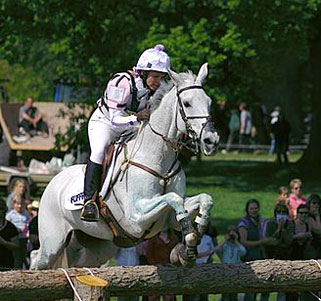Upcoming Events
33RD SOUTHEAST ASIAN GAMES, 2025
Date: 11th - 19th December 2025
Venue: Thailand
Category: Dressage, Eventing, Show Jumping
Announcements
Please be informed that FEI has created an educational tool for CLEAN SPORT for infrastructure. For more details please visit http://youtu.be/o2i85rYgyPM
Eventing
Eventing is the most complete combined competition discipline recognised by the FEI where men and women compete as equals in both individual and team events.
It demands of the competitor considerable experience in all branches of equitation and a precise knowledge of the horse’s ability and of the horse a degree of competence resulting from intelligent and rational training. It covers every aspect of horsemanship: the harmony between horse and rider that characterise Dressage; the contact with nature, stamina and extensive experience essential for the Cross Country; the precision, agility and technique involved in Jumping.
Eventing is one of the three disciplines in competition at the Olympic Games, the other two being Jumping and Dressage.

There are two types of modern competitions: with or without steeple chase in the Cross Country phase.
With Steeple chase
This competition comprises three distinct tests:
1. Dressage
2. Cross-Country
3. Jumping.
They take place on separate consecutive days during which a competitor rides the same horse throughout.
Dressage Test
After an opening veterinary fitness inspection, a Dressage test is performed, the object of which is the harmonious development of the physique and ability of the horse.
The test consists of a series of compulsory movements at walk, trot and canter gaits, within a rectangular arena 60 m. long and 20 m. wide. To perform a good Dressage test, the horse needs to be flexible and fluid.
To keep the strong, Eventing horses under the firm control required by the exacting Dressage movements involves great knowledge and understanding. A good Dressage test lays the foundation for the rest of the competition and horses that are found wanting in this phase face an uphill struggle to get up amongst the prize-winners.
Cross-Country
The focus of the entire event is on the Cross-Country test, the objective of which is to prove the speed, endurance and jumping ability of the horse, while at the same time demonstrating the rider’s knowledge of pace and the use of his horse.
It consists of four distinct phases (as shown below). The four phases are quite independent as far as the timekeeping is concerned and loss of time in one cannot be compensated for by gain of time in another.
Exceeding the time allowed in any of the four phases results in penalties. Penalties are also given for refusals and falls of horse or rider. All penalties are added together and recorded for inclusion in the final classification. The first fall of a horse and second of a rider entails elimination.
- Phase A: Roads and Tracks.A Sort of warm up phase.
- Phase B: Steeplechase. This phase was designed to test the speed of horse and rider over jumps and requires horses to jump 8 – 12 brush fences, depending on the level of competition.
- Phase C: Roads and Tracks. This is a recovery phase after the exertions of the steeplechase, usually carried out at the walk and trot.
- Phase D: Cross-Country. This is the most difficult part of the test consisting in a course, usually twice the distance of the steeplechase, comprising 30 to 40 Jumping efforts on natural solid obstacles, such as stone walls, woodpiles, water, ditches, etc. The aim is to jump all the fences within the limits of the time allowed.
Jumping Test
The Jumping test takes place on the last day after a third veterinary (horse) inspection.
Riders may voluntarily retire their horses if they seem unfit to continue. This test is run in reverse order of merit and its main objective is to prove that the horses have retained their suppleness, energy and obedience in order to jump a course of 10 to 13 obstacles.
The winning individual is the competitor with the lowest total of penalty points. The winning team is the one with the lowest total of penalty points, after adding together the final scores of the three highest placed competitors in the team.
Without Steeple Chase
These competitions comprise the same three tests, but the Cross Country test does not include Phases B & C.
Moreover, phase A, before the Cross Country Obstacle Test, is optional. This format has contributed to developing the sport in countries traditionally less familiar with Eventing and has become the standard for the sport at all levels.








